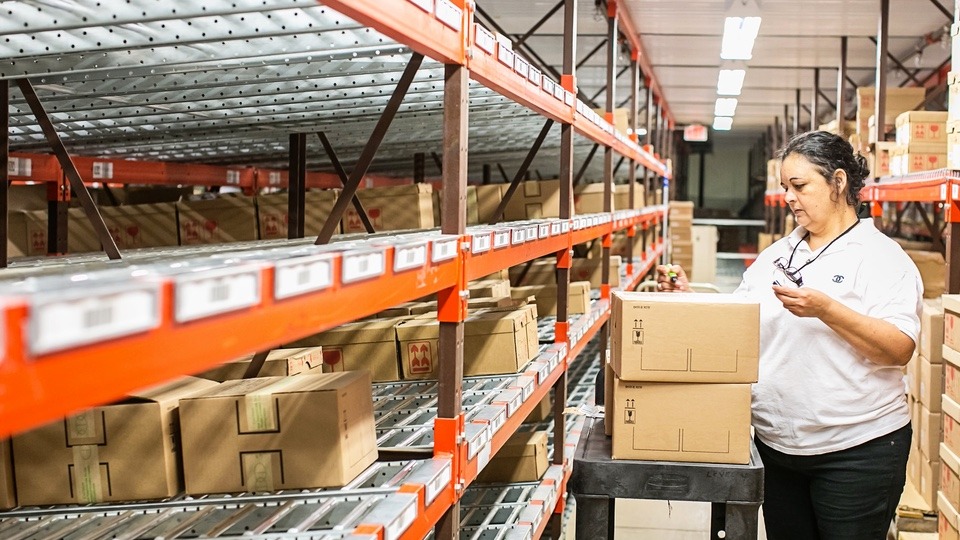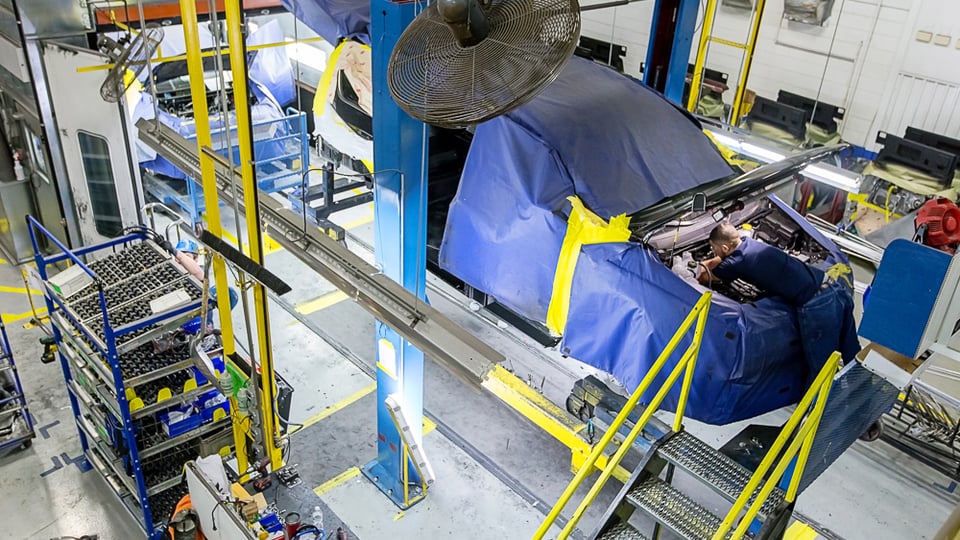Linear vs. Circular Supply Chains

In an era where change has become the only constant, businesses are questioning the status quo more than ever. As forward-thinking companies' goals, vision, and values evolve, old-school practices are finding themselves on shaky ground. This industry-spanning shift has nudged businesses to reevaluate the "done-and-dusted" arenas of their operations. They're rethinking their sales strategies, shaking up their marketing tactics, reimagining customer engagement, and, most importantly, giving supply chain management a serious second look.
Let’s kick things off by breaking down why the linear supply chain business model (a relic from the earliest days of the Industrial Revolution) has finally become too outdated to stand behind. We’ll also introduce you to a new supply chain philosophy allowing manufacturing, production, and fulfillment companies across industries to grow their profit margins while outpacing their competition regarding sustainability and ecological impact.
So if your company wants to go green without seeing red on the balance sheet, you're in the right place. Let's dive in!
The Linear Supply Chain: An Unsustainable Reality?
The classic, linear supply chain business model can be summarized in three straightforward steps:
Take ➔ Make ➔ Dispose
The simplicity of this approach allowed the linear model to flourish for decades, while its pitfalls went largely unexamined due to the favorable circumstances of the era.
The trifecta of cheap and accessible raw materials, a laser focus on minimizing manufacturing costs to boost profits, and a lack of understanding (or willingness to overlook) environmental impact all played pivotal roles in the long reign of linear supply chains.
But as we collectively turn the page to a greener chapter, the "Take, Make, Dispose" approach is quickly losing ground.
With global waste expenses skyrocketing to an eye-watering $163 billion annually and an intimidating pile of roughly two billion tons of waste materials accumulating in our already strained landfills, the call for change is louder than ever.
Coupled with the roller coaster ride of raw material costs and price volatility impacting an expanding number of markets, defending the linear supply chain business model becomes a formidable challenge.
It's safe to say it's high time we reconsidered our approach to supply chain strategies, processes, and management.
Fortunately, companies that want to make a change won't be forced to reimagine their supply chain management on their own.
A fresh, sustainability-centric supply chain management model is overtaking the linear model in businesses around the globe. This business model is (almost!) as simple as the linear model while offering a wealth of new benefits to both profits and the planet.
Riding the Green Wave: The Shift Towards Circular Supply Chains
As we hinted above, circular supply chains - an integral part of the larger "circular economy" movement - is steering away from the wasteful "Take, Make, Dispose" routine and turning toward a more sustainable pathway.
This evolution involves a significant pivot in supply chain strategy: instead of depending on a never-ending influx of new raw materials, circular supply chains aim to maximize the full potential of materials, resources, and products (like customer returns) already in circulation.
The philosophy of "minimal waste, maximum utility" lies at the heart of circular supply chain management and the broader circular economy. This approach has garnered popularity not only among environmentally-conscious businesses but also among manufacturing leaders who prioritize operational efficiency and profitability with laser focus.
Diving Deeper: The Multi-Faceted Advantages of Circular Supply Chains
The wide-ranging appeal of circular supply chain management boils down to three main advantages.
The first and primary advantage of circular supply chains’ is, of course, their ability to dramatically cut down on waste.
Circular supply chains' second major advantage is their ability to provide a buffer for companies that shields them from unpredictable material price shocks and headache-inducing supply disruptions. By creating a closed supply chain ecosystem that aims to generate the highest level of self-sufficiency possible, you can ensure your operations proceed on time and under budget - even when your competition is caught flat-footed.
Rounding out circular supply chains’ top three advantages is the opportunity to prolong the life cycles of materials and products manufacturers have already invested time, capital, and labor into. This ability to maximize the value of earlier investments resonates with manufacturing leaders across the board - regardless of whether they prioritize a traditional "dollars and cents" mindset or embrace a more contemporary, "impact first" philosophy.
After all, what business leader doesn't want to stretch the value of their materials further than they thought possible? It's a win-win solution for profits and the planet!
Circular Supply Chains: An Efficiency and Sustainability Game-changer
Let's dive deeper into the nuts and bolts of circular supply chains. As mentioned above, a circular supply chain draws its advantages from leveraging the six "R's" of waste management.
Much like the consumer-targeted "Reduce, Reuse, Recycle" mantra, the six "R's" of supply chain waste management aim to drive sustainability by simultaneously reducing waste and maximizing the utility of materials, products, and other essential resources.
But what are the six "R's"? How do they affect both environmental impact and profitability?
Let's find out together!
The Six "R's" Behind Circular Supply Chains Success
1. Rethink - How can you rethink your company's approach to material sourcing, manufacturing, packing, and delivery processes, and product and material End-of-Life strategies to get more from your supply chain? Analyzing emerging market and industry trends can help you identify areas ripe for rethinking.
2. Refuse - Identify opportunities to sidestep unnecessary waste by refusing to use inefficient materials like single-use plastic and certain types of ceramics, chemicals, and glass.
3. Reduce - Evaluate your manufacturing process to identify opportunities for reducing both material consumption and reliance on new materials. Implementing strategies to reduce overproduction is also crucial for establishing a sustainable circular supply chain. Overproduction is the leading cause of waste in manufacturing, so any mitigation strategies can have an outsized impact on both the earth and earnings.
4. Reuse - Identify opportunities to reuse materials, defective products, and customer returns to eliminate waste and maximize utility. This reduces wasted time, effort, and capital while significantly cutting your landfill contributions.
5. Repurpose - Time to get innovative! How can you repurpose materials or products that would otherwise end up going to waste to improve your efficiency? Answer that question and you can start reducing expenses and environmental impact.
6. Recover - One of the most important aspects of the circular supply chain and larger circular economy. This "R" replaces the "Dispose" step in the linear supply chain business model. It aims to reintroduce valuable materials and products into your supply chain to maximize their value and utility.
Learn how to save space in your facility. Download The Guide To Optimizing Warehouse Space Utilization!

Transform Your Supply Chain with UNEX Space Optimization Solutions
As businesses shift from linear to circular supply chains, optimizing the efficiency and sustainability of operations becomes crucial. UNEX offers industry-leading space optimization solutions that align perfectly with the principles of circular supply chains, helping companies reduce waste, increase utility, and enhance overall performance.
SpanTrack Carton Flow
 UNEX SpanTrack carton flow systems are designed to enhance efficiency by optimizing space within your existing storage infrastructure. By integrating these dynamic storage solutions into your supply chain, you can effectively reduce overproduction and streamline the handling of materials, reducing waste and maximizing the utility of your resources. SpanTrack has FIFO (First-In, First-Out) capabilities that ensures products are used in the correct order, further reducing waste and improving sustainability.
UNEX SpanTrack carton flow systems are designed to enhance efficiency by optimizing space within your existing storage infrastructure. By integrating these dynamic storage solutions into your supply chain, you can effectively reduce overproduction and streamline the handling of materials, reducing waste and maximizing the utility of your resources. SpanTrack has FIFO (First-In, First-Out) capabilities that ensures products are used in the correct order, further reducing waste and improving sustainability.
SpeedCell High-Density Storage
 SpeedCell high-density storage systems from UNEX are ideal for companies looking to implement the "Reduce" and "Reuse" principles of the circular economy. By compressing storage space and making better use of available room, SpeedCell allows you to store more products in less space, reducing the need for additional materials and storage solutions. This approach not only minimizes environmental impact but also improves operational efficiency by reducing the time spent retrieving and handling products.
SpeedCell high-density storage systems from UNEX are ideal for companies looking to implement the "Reduce" and "Reuse" principles of the circular economy. By compressing storage space and making better use of available room, SpeedCell allows you to store more products in less space, reducing the need for additional materials and storage solutions. This approach not only minimizes environmental impact but also improves operational efficiency by reducing the time spent retrieving and handling products.
Pallet Track
 For high-throughput operations that require efficient movement of materials, UNEX Pallet Track systems offer a sustainable solution. By facilitating smooth and reliable flow of pallets through the supply chain, these systems help reduce the reliance on new materials and streamline the reuse and recovery of valuable resources. Pallet Track is particularly effective in operations that prioritize rapid turnover and minimal waste, aligning perfectly with the goals of a circular supply chain.
For high-throughput operations that require efficient movement of materials, UNEX Pallet Track systems offer a sustainable solution. By facilitating smooth and reliable flow of pallets through the supply chain, these systems help reduce the reliance on new materials and streamline the reuse and recovery of valuable resources. Pallet Track is particularly effective in operations that prioritize rapid turnover and minimal waste, aligning perfectly with the goals of a circular supply chain.
Discover Smart Space Solutions That Transform the Supply Chain
If you're ready to improve your supply chain process, you've found the perfect partner. UNEX offers industry-leading space optimization solutions make it easy for supply chain leaders to transition toward more sustainable and efficient operations while enhancing performance, productivity, and profits. Interested in learning more? Get in touch with one of our space optimization experts today!





